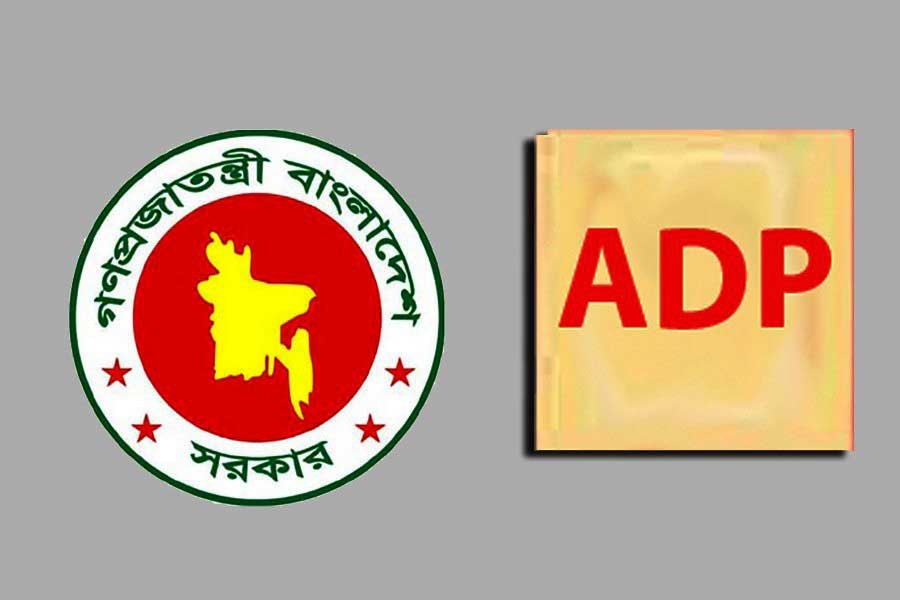Plenty of things, it seems, are not right as far as the implementation of the country's annual development programme (ADP) is concerned.
Allegations have it that the pace of execution of development projects is very slow during the most part of a financial year (FY) for reasons within or beyond the control of most government agencies.
However, the pace of execution picks up at an astronomical rate in the final months of a FY, raising lots of doubt about quality of work and proper use of funds allocated for hundreds of development projects.
In addition to questions very often raised about the slow pace of project execution and quality of work, another problem noted in the case of ADP execution is the pressure exerted on the Planning Commission (PC) to include a large number of unapproved projects in the revised ADP every year.
Development experts find the practice of pushing unapproved projects for inclusion in the ADP as an unhealthy one. This, according to them, is giving rise to indiscipline and encouraging politicisation of development administration.
A report published in The Financial Express on Saturday last said the officials at the PC are in a dilemma as different ministries have sent hundreds of new projects in recent months for inclusion in the RADP. Most of those projects are not backed by necessary feasibility studies.
The number of unapproved projects sent for inclusion in this year's RADP is equivalent to more than three-fourths of the number of projects included in the original ADP.
Ministries do usually push a large number of unapproved projects for inclusion in the RADP with the hope of getting allocations in the next year's ADP either from domestic or external sources. However, a good number of projects do not get funds even after their inclusion in the ADP.
The PC will have to get all those projects approved by the executive committee of the national economic council (ECNEC) before including those in the RADP. It will be a tough ask for the officials to get such a large number of projects approved within a short time. However, a few might get a place on the long list of 'unapproved' projects that remains a part of the RADP.
A good number of unapproved projects sent by different ministries are, allegedly, politically motivated ones. Usually, ruling party as well as opposition lawmakers are found lobbying hard for these projects under political consideration.
The most disappointing part of this episode of pushing unapproved projects for inclusion in the RADP is that the majority of the ministries and divisions have been failing in their task of executing their approved development projects on schedule. Barring a few, most of them are found performing well below the expected level.
Thus, poor performance in project execution, invariably, leads to cut in the size of the original ADP halfway through every financial year. The PC has been doing this downsizing job rather regularly.
Governments -- past and present - have demonstrated a propensity to playing to the gallery, as far as fixing the size of both revenue and development budgets is concerned. The finance ministry does always want the size of a budget of a particular year to be bigger than the past ones. It is found unwilling to take into consideration the constraints to mobilisation of revenue or implementation capacity of the government agencies.
There is no denying that in an expanding economy, the government will need to spend more, particularly on development activities. However, the policymakers should not be oblivious of the capacity of the government machinery in matters of utilisation of resources efficiently and prudently.
Here, the failure to implement development projects on targets comes as a blessing in disguise for the government. The downsizing of the ADP, which is usually done halfway through every FY, does help the government compensate for the shortfall in revenue earning. The major shortfall takes place in the case of tax revenue earnings.
The policymakers do admit weaknesses of the country's development administration. The flaws have been taking a heavy toll on the economy. The delay in execution of projects and the consequent hike in cost of projects have been happening regularly. These negative features of the development administration are now more prominent than before, particularly in the case of large infrastructural projects.
There is an overriding need for carrying out reforms of serious nature in the country's development administration to help save resources wasted on many unnecessary projects. The planning cell in each of the ministries/ divisions should be strengthened and empowered adequately to select the right kind of projects and refer those to the PC for approval. This would help stop the flow of unapproved projects with requests for inclusion in the ADP or RADP. The proper scrutiny of projects should be done at the level of the ministries/ divisions. The question is: Will it ever happen?


